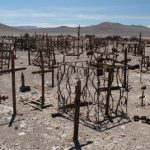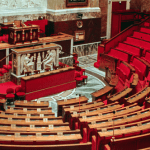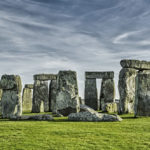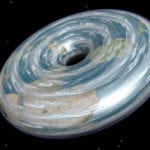 Movies and TV
Movies and TV  Movies and TV
Movies and TV  History
History 10 Things You Never Knew About Presidential First Ladies
 Movies and TV
Movies and TV 10 Zombie Movies That Will Actually Terrify You
 Humans
Humans 10 Times Scientists Were Absolutely Sure… and Absolutely Wrong
 Our World
Our World 10 Pivotal Moments for Life on Earth
 Movies and TV
Movies and TV 10 Most Realistic Medical TV Shows of All Time
 Creepy
Creepy 10 Eerie & Mysterious Ghosts of the Pacific Coast
 Weird Stuff
Weird Stuff 10 Typos That Accidentally Changed History
 History
History 10 Times Trickery Won Battles
 Technology
Technology 10 Awesome Upgrades to Common Household Items
 Movies and TV
Movies and TV 10 Movie Flops That Found Their Way to Cult Classic Status
 History
History 10 Things You Never Knew About Presidential First Ladies
 Movies and TV
Movies and TV 10 Zombie Movies That Will Actually Terrify You
Who's Behind Listverse?

Jamie Frater
Head Editor
Jamie founded Listverse due to an insatiable desire to share fascinating, obscure, and bizarre facts. He has been a guest speaker on numerous national radio and television stations and is a five time published author.
More About Us Humans
Humans 10 Times Scientists Were Absolutely Sure… and Absolutely Wrong
 Our World
Our World 10 Pivotal Moments for Life on Earth
 Movies and TV
Movies and TV 10 Most Realistic Medical TV Shows of All Time
 Creepy
Creepy 10 Eerie & Mysterious Ghosts of the Pacific Coast
 Weird Stuff
Weird Stuff 10 Typos That Accidentally Changed History
 History
History 10 Times Trickery Won Battles
 Technology
Technology 10 Awesome Upgrades to Common Household Items
10 Interesting Replicas of World-Famous Landmarks
Each year, millions of people travel thousands of miles across the globe to see famous landmarks with their own eyes. But for those unconcerned with originality, there are plenty of replicas scattered about. While some of them are undeniably tacky—like the reproductions of the Statue of Liberty and the Eiffel Tower on the Las Vegas strip—some of them alter the original in fascinating ways. Here are 10 of the most interesting replicas, encompassing both the tacky and the tasteful.
Related: 10 Tourist Attractions That Deserve More Love
10 The White House in Iraq
When building his mansion, Kurdish businessman Shihab Shihab decided to mimic the “beauty and simplicity” of the White House in Washington, D.C., the home of every U.S. president since John Adams in 1800. The replica cost Shihab $20 million and can be found in the city of Erbil in northern Iraq, which used to be under the control of Saddam Hussein.
Although he wanted the facade to mimic the original, Shihab went his own way with the interior. The original White House is grand inside, of course, but Shihab went even further by having the ceilings and banister of the grand staircase lined in 21-karat gold. And while the Iraqi version is smaller than the American version—clocking in at 32,300 square feet (3,000 square meters) instead of 55,000 square feet (5,110 square meters)—it does feature a lavish Turkish bath. Plus, Shihab, speaking in 2014, commented, “I get to keep my bedroom for the rest of my life while Obama has to vacate it when his term ends.”[1]
9 Christ the Redeemer in Portugal
The Christ the Redeemer statue in Brazil is 98 feet high (30 meters) and stands atop a 26-foot (8-meter) high pedestal, helping it to dramatically overlook Rio de Janeiro with outstretched arms. When the Cardinal Patriarch of Lisbon saw the statue in 1934, he set about erecting a similar one in Portugal. The project then took on more significance because of World War II, with the statue symbolizing Portuguese gratitude for being spared from the brunt of the war.
The Portuguese version, Cristo Rei (Christ the King in English), was inaugurated in 1959 and stands 90 feet high (28 meters) atop a 246-foot (75-meter) pedestal. It is located in Almada but looks across the river to Lisbon. Visitors can ascend the pedestal via an elevator to enjoy the close-up view of Christ as well as sweeping views over Lisbon.[2]
8 The Statue of Liberty in France
There are hundreds of imitations of the Statue of Liberty, but one of the most unique can be found at Vascoeuil Castle in France. Rather than carrying a torch held aloft in one hand and clutching a tablet in the other, the statue in this French garden is holding up torches in both hands—as if cheering on her favorite band or sports team. Officially called “La Victoire de la Liberté” (“The Victory of Liberty”), she was created in 1972 by renowned artist Salvador Dalí and is much smaller than the copper figure in New York, standing just a little taller than the average person.
A copy of Dalí’s version can also be found in his hometown of Cadaquès, bearing a plaque with an “Ode to Salvador Dalí” by poet Federico Garcia Lorca. This version of Lady Liberty is also used as a symbol of Catalonia’s independence from Spain, being dressed in the flags of the region and bearing the slogan “Llibertat presos politics,” which translates to “Freedom for political prisoners.”[3]
7 Big Ben in India
People driving along VIP Road in Kolkata, India, are in for a surprise when they reach the junction to Lake Town. Here, they’ll find a towering clock that resembles Big Ben. The replica of the London landmark, known as the Kolkata Time Zone Tower, was built in 2015, but it’s considerably shorter than the original, standing nearly 100 feet tall (30 meters) in comparison to Big Ben’s 315 feet (96 meters).
Mriganka Bhattacharya, the South Dumdum Municipality chairman, says that the clock tower was inspired by Chief Minister Mamata Banerjee’s desire for Kolkata to rival London. “Big Ben was an obvious choice,” he said, given that they only had a small plot of land to work with and needed a vertical structure.
However, the choice was met with some criticism. Debashish Das, an architect professor at Jadavpur University, said that “imitating a structure from a different city is clearly faulty. All the landmarks in a city have their history and cultural background; there is a reason for their existence.”[4]
6 Moai (Easter Island Heads) in Japan
Visitors of Makomanai Takino Cemetery, located near the city of Sapporo in northern Japan, are greeted by a row of 40 moai, more commonly known as Easter Island heads (they do actually have bodies; they’re just disproportionately small compared to their heads and are often buried). The Rapa Nui people on Easter Island craved hundreds of these monolithic statues, which, on average, are 13 feet (4 meters) tall. The versions found in the Japanese cemetery stand between 21 and 31 feet (6.5 to 9.5 meters) tall.
Moai replicas can also be seen near the southern tip of Japan at Sun Messe Nichinan, a park about an hour south of Miyazaki. Seven impressive moai stand by the sea at a height of about 18 feet (5.5 meters). The moai heads are the main draw, but visitors can also see the Earth Appreciation Bell, a rare insect collection, and African tortoises.[5]
5 The Taj Mahal in Bangladesh
Bangladeshi filmmaker Ahsanullah Moni began constructing a full-size replica of India’s Taj Mahal in his home country in 2003, and it was finished just five years later. Moni said that he built the replica because many Bangladeshis cannot “afford to go to Agra to see the Taj, so I am bringing the Taj to them.” Nearly 40% of people in Bangladesh live in poverty, so Moni claims he is “doing this only for the poor. They cannot travel. They cannot see this historical wonder.” However, he also adds that he hopes “the landmark construction can attract more tourists from home and abroad.”
Moni’s Taj Mahal ruffled a few feathers in India, though. “You can’t just go and copy historical monuments,” an official at the Indian High Commission complained. However, Deepak Mittal, a spokesman for the High Commission, admitted that the replica wasn’t likely to cause confusion for tourists and that the “copy is a form of flattery.”[6]
4 Stonehenge in Australia
The majestic ruins of Stonehenge—the stones of which were placed to align with the rising sun during the summer solstice and with the setting sun during the winter solstice—can be found in England. However, people on the other side of the world can visit Esperance Stonehenge in Western Australia as an alternative. Instead of being built to mimic the current age and weather-worn ruins, Esperance Stonehenge is a representation of how the stones would have looked when they were originally placed.
The replica is built on a farm and is made up of 137 stones weighing 2,755 tons (2,500 tonnes), which were carved out of local granite. Aside from looking new, it’s as accurate a replica as possible, being both full-size and astrologically aligned. When owners Kim and Jillian Beale were looking to retire in 2014, they put the attraction up for sale at an asking price of $5 million AU ($3.2 million US). After selling off some of the surrounding farmland in 2020, they reduced the price to $2.1 million AU ($1.3 million US), and it finally sold in 2022.[7]
3 The World Trade Center’s Twin Towers in China
China is packed with replicas of famous landmarks from around the world, even having specific parks dedicated to this purpose. Two such parks are World Park in Beijing and Window of the World in Shenzhen. There is considerable overlap in the replicas that the parks have on show, including the Eiffel Tower, the Taj Mahal, and the Leaning Tower of Pisa.
Controversial recreations of the World Trade Center Towers are also found in both parks. Along with considerably smaller-than-life-size versions of the Statue of Liberty and the Empire State Building, the Twin Towers are still standing in these parks more than two decades after the originals fell. The parks have chosen not to update the scenes, but whether this is a deliberate tribute is unknown.[8]
2 The Eiffel Tower in Japan
There are a handful of Eiffel Tower replicas in Japan, but the most impressive one can be found in Minato, Tokyo. Tokyo Tower was completed in 1958 and reaches 1,091 feet (just shy of 333 meters), making it just a touch taller than its French inspiration, which clocks in at 1,083 feet (330 meters). Tokyo Tower’s impressive height also means that it’s the second tallest structure in Japan—coming second only to Tokyo Skytree, a broadcasting and observation tower that is a staggering 2,080 feet (634 meters) tall.
Tokyo Tower’s main viewing deck is situated 492 feet (150 meters) up and can be reached via elevator or a 600-step open-air staircase. Another set of elevators takes guests up to the top deck at 820 feet (250 meters). The tower’s distinctive orange and white paint isn’t a stylistic choice to distinguish it from the Parisian version; rather, it’s to abide by aviation law, which rules that buildings over a certain height must be painted in these colors. As of its 40th anniversary, Tokyo Tower has even had its own mascots: the Noppon Brothers are pink pointy-headed dungaree-wearing twins.[9]
1 Tomb of Tutankhamun in Egypt
The real tomb of Tutankhamun is found in Egypt, of course, but just a mile away sits an incredibly detailed replica. Although the original tomb is still open to visitors, each person passing through it aids its demise, with their presence contributing to the flaking of paint and the wearing down of rock. In an effort to combat this, in 2014, a meticulously crafted replica was opened nearby.
The replica was created as a philanthropic gesture by artist Adam Lowe, who owns the company Factum Arte. It took his team five years to complete and cost $690,000. To measure the tomb, they used a 3D laser scanner which is accurate up to one hundred million points per square meter. A computer-controlled router then cut the walls and sarcophagus to the exact measurements. Once cut, molded, and cast, paint was applied with the aid of both a digital printer and human hands.
There are a couple of differences from the original: The antechamber is used as a Tut museum, and Tut’s mummy is absent (since it currently resides in the original). Archaeologists have generally been enthusiastic about technology being able to make these replicas as accurate as possible. Robert Brier, an Egyptologist at Long Island University, said the Tut replica “is not going to hurt anybody, and it’ll do good for Egypt and save the tomb. It’s a no-brainer.”
Although clearly not a tacky rip-off like some replicas, tourists often still have the desire to see the real thing. To that, Lowe says, “If what’s important is deepening understanding, then this replica is an approach that can lead to a deeper understanding. If it’s about some kind of prejudice that you have to see the original, then you need to confront your own prejudices.”[10]








